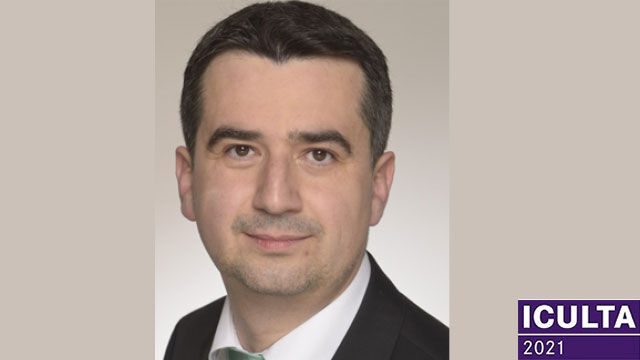Nowadays, the pandemic situation caused by the COVID-19 virus inspired many companies, research institutes and lighting designers to adopt UV radiation as a new tool in their projects and research. The promising germicidal effect of the UVC radiation also on the Coronavirus raises the question of the reliable measurement of the UV radiation. However, this complex task needs an expertise and appropriate equipment. The system that meets all requirements for UV measurements consists of a high-precision spectroradiometer with a stray light correction and either irradiance probes or PTFE integrating spheres for total radiant flux measurements.
Nevertheless, a reliable and traceable calibration of the system is a challenging factor. So far, no national metrological institute has offered a reference standard for the total radiant flux in the UVB and UVC spectral region. Therefore, we have realized traceable UV LED calibration standards on our own [1], which complete measurement system for UV radiation presented here.
The UV LED calibration standards have been developed for the typical peak wavelengths of 280 nm (UVC), 305 nm (UVB) and 365 nm (UVA). The traceability of the radiant flux has been achieved by the precise calibration of the spectroradiometer with the irradiance probe and a subsequent integrative measurement using a goniophotometer. Such UV LED calibration standards can be used for monitoring and for absolute calibration of UV measurement equipment consisting of the stray light corrected spectroradiometer and the integrating sphere.
In order to minimize the measurement uncertainty of the spectroradiometer, especially in the UV range, a stray light correction is necessary. This can be achieved by a tunable optical source that emits narrow (<1 nm) spectral lines at different wavelengths. Whereas the light source tunes the output radiation, the UV-enhanced spectroradiometer detects multi-order or internal scattering light beside the actual signal. This so-called stray light is than corrected numerically.
The largest contribution to the measurement uncertainties of the systems containing integrating spheres is the fluorescence of the coating material. Special manufacturing procedure with optically pure Polytetrafluorethylen (PTFE) enabled us to produce new integrating spheres with permanently negligible low fluorescence. Practically fluorescence-free integrating spheres over the entire spectral range beginning at 200 nm can be realized for special applications using completely new manufacturing methods.
Reference
[1] B. Eder, D. Konjhodzic, LEDs Magazine, September 2020, 23- 25 (2020)

